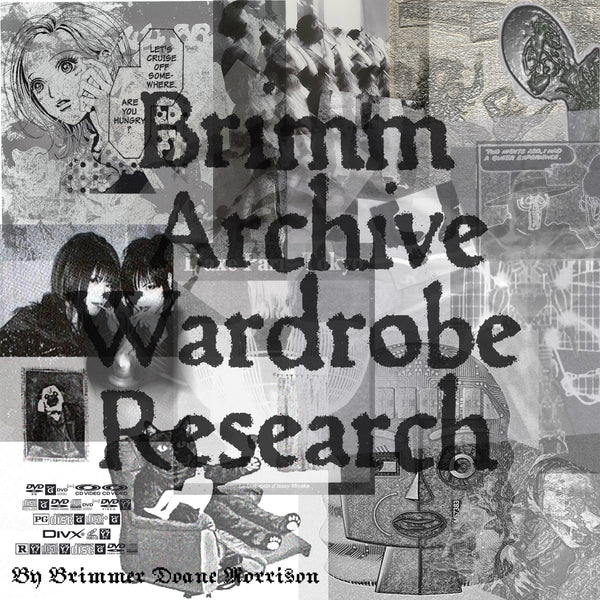Named after hiker’s favorite trail snack “Good Ol’ Raisins and Peanuts.” Gorpcore includes a strong hiking aesthetic that is built and layered for a more urban lifestyle. This aesthetic combines high fashion from the runway and materials made for the tops of mountains. Where utility, comfort and usability come paramount. The brands that constitute this aesthetic have all been well known hiking and outdoors companies for generations. Patagonia, The North Face, Arc’Teryx, and Salomon to name a few. There are regional favorites such as REI from Seattle; a local classic in the Northwest of America where I am from. Jim Gaffigan has a joke about everyone looking like they could go on an inprop-to hike, and the culture founded by REI is why. Other brands like And Wander or Snow Peak from Japan, L.L. Bean from Maine, or Rossignol from France. Until recently, fashion hasn’t been the main focus of these companies. The gorpcore aesthetic includes these more traditional brands then translates that into fit with a story that fits their aesthetic.
Recent 'Gorpcore' Collabs
The North Face recently partnered up with Gucci, and Arc’Teryx with Beams official and Palace. For The North Face and Gucci, the 'eccentric young voyager' was the target nostalgia. A fanciful, delightful trip through europe, via train, through the alps, all with their 'gorpcore' designs.
Before all that however, the sole focus of these companies was to makes clothes for the ultra-adventurer. By that I mean that the materials used such as soles from Vibram, or waterproof layers from Gore-Tex are commonplace in the aesthetic. These materials help to push the boundaries of outdoor activities such as hiking, climbing, camping, skiing or snowboarding. North Face Purple Label, Prada spring/summer 2017, Ralph Lauren and Snow Peak use more toned-down palates to appeal to a much more fashion forward audience. Although this isn’t always fact, a pair of approach sneakers designed by Palace might look great, but may not perform as well as more traditional hiking shoes. Many instagram pages like l.holl and Truss Archive rave about these collabs.
I love them as well; the Vivienne Westwood Asics collaboration is one of my favorite sneakers of all time. These avant garde and modern takes on traditional hiking shoes takes fashion to a different, more natural environment.


Short History of the Outdoors Movement
The fashion industry’s intrusion into the outdoors industry and the creation of “gorpcore,” was inevitable, and I do not think that they have ruined or changed how being an adventurer is interpreted. Going to national parks, mountaineering, rock climbing, van life and winter sports are without a doubt, non-inclusive industries and activities. The percentage of people of color and minorities that have accessibility to go adventure in the wilderness is extremely low. No matter the inclusivity efforts performed by these corporations, there is an inherit privilege with the 'outdoors.'
Before the Civil Rights Act in the United States, lynching and other hate crimes were commonplace in outdoor spaces. Minorities simply weren’t allowed into “white” spaces, namely national parks. I bring this up because when reading about 'gorpcore,' as well as the histories of hiking clothing, this important fact is often left out. It is often mentioned that the accessibility of this style of clothing is high because it is easy to get many pieces that fit easily. If you live in a place like Bellingham, Washington, where hiking is second nature to most people, then yes, it might be accessible. I do not think that still doesn’t take away from the long history of discrimination in parks and outdoor spaces.


Outdoor recreation as we know it today started in the 1960’s with activities like long distance running, climbing and hiking. After World War Two, Britain figured out that they could train young men in tasks like these to harden them for higher endurance missions. A man named Joshua Miner brought this same school of thought to the United States in the form of Outward Bound.
Outward Bound hosted courses for mountain climbing, swimming in unbearable waters, backpacking and long-distance running. Students and young people in America in the 60’s were very fond of 'back to nature' experiences. This was because of an era of freedom marches and activism as well as the green movement. These programs lead students to summit Everest for the first time and expand on wilderness education like never seen before.
Similarly, the baby boom proceeded to rise the percentage of people attending college. Outdoors clubs around the country became very popular. By the 70’s, recreation programs across the country were in full stride and wealthy enough to host long expeditions. This massive increase in outdoors activities made new niches for businesses to be created to sell products to these young adventurers. For organizations to preserve the nature that these youth love so much but are actively destroying purely out of increased activity in the parks and recreation areas. The outdoors industry now accounts for roughly two percent of the nation’s GDP which is roughly 880 billion dollars of consumer spending.






